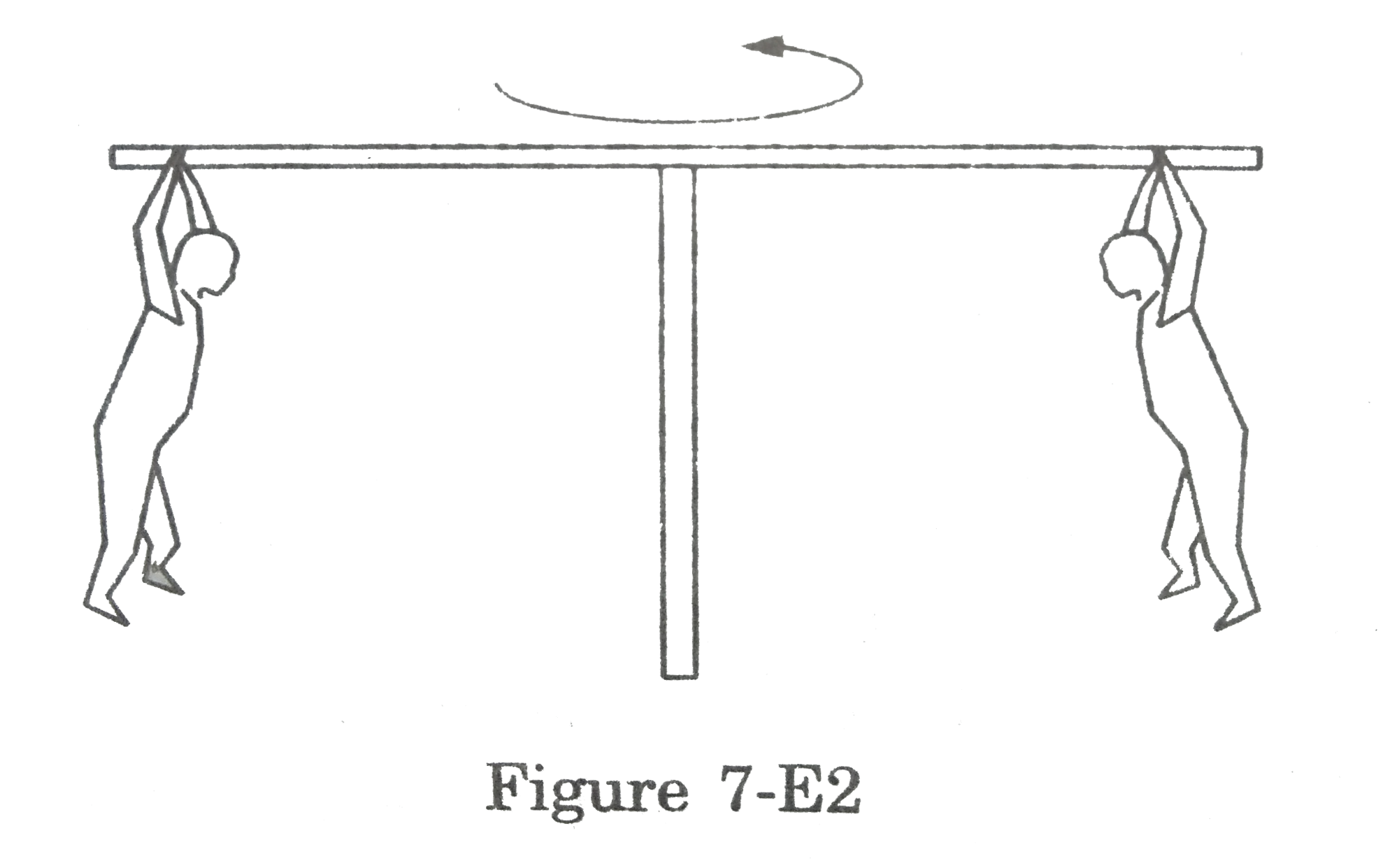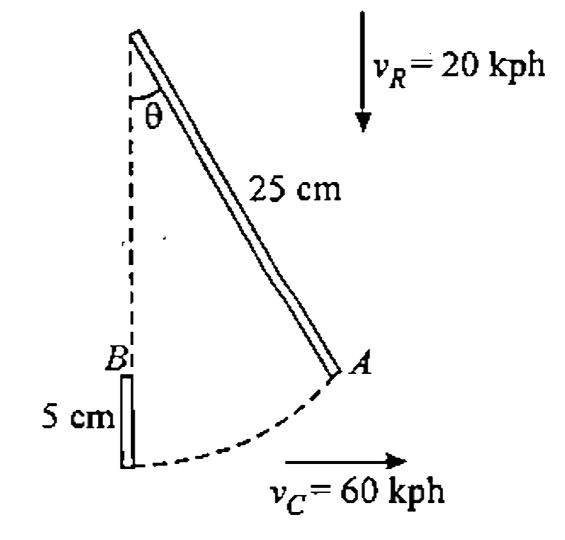In a huge park, people are concentrated at three points (see figure):
A: where there are different slides and swings for children.
B: near which a man-made lake is situated.
C: which is near to a large parking and exit. Where should an ice cream parlour be set up so that maximum number of persons can approach it?
To determine the best location for an ice cream parlour in the park so that it is accessible to the maximum number of people concentrated at points A, B, and C, we can follow these steps:
1. Identify the Points:
- Let A be the point where there are different slides and swings for children.
- Let B be the point near the man-made lake.
- Let C be the point near the large parking and exit.
2. Understanding the Problem:
- We want to find a location for the ice cream parlour that is equidistant from points A, B, and C. This will ensure that the maximum number of people can approach it with equal convenience.
3. Draw the Triangle:
- Sketch a triangle with vertices at points A, B, and C. This triangle represents the locations of the people in the park.
4. Find the Perpendicular Bisectors:
- To find a point that is equidistant from A, B, and C, we need to find the perpendicular bisectors of at least two sides of the triangle formed by points A, B, and C.
- For example, find the perpendicular bisector of side AB and the perpendicular bisector of side AC.
5. Locate the Intersection Point:
- The point where the two perpendicular bisectors intersect is the point that is equidistant from points A, B, and C.
- This intersection point is the optimal location for the ice cream parlour.
6. Conclusion:
- Set up the ice cream parlour at the intersection point of the perpendicular bisectors of the triangle formed by points A, B, and C. This location will allow the maximum number of people to access the parlour easily.
- Let A be the point where there are different slides and swings for children.
- Let B be the point near the man-made lake.
- Let C be the point near the large parking and exit.
- We want to find a location for the ice cream parlour that is equidistant from points A, B, and C. This will ensure that the maximum number of people can approach it with equal convenience.
- Sketch a triangle with vertices at points A, B, and C. This triangle represents the locations of the people in the park.
- To find a point that is equidistant from A, B, and C, we need to find the perpendicular bisectors of at least two sides of the triangle formed by points A, B, and C.
- For example, find the perpendicular bisector of side AB and the perpendicular bisector of side AC.
- The point where the two perpendicular bisectors intersect is the point that is equidistant from points A, B, and C.
- This intersection point is the optimal location for the ice cream parlour.
- Set up the ice cream parlour at the intersection point of the perpendicular bisectors of the triangle formed by points A, B, and C. This location will allow the maximum number of people to access the parlour easily.
Topper's Solved these Questions
- TRIANGLESBOOK - MTG IIT JEE FOUNDATIONCHAPTER - TRIANGLESEXERCISE - EXERCISE (Multiple Choice Questions) (LEVEL-1 )
35 Videos
- TRIANGLESBOOK - MTG IIT JEE FOUNDATIONCHAPTER - TRIANGLESEXERCISE - EXERCISE (Multiple Choice Questions) (LEVEL-2 )
10 Videos
- TRIANGLESBOOK - MTG IIT JEE FOUNDATIONCHAPTER - TRIANGLESEXERCISE - NCERT SECTION (Exercise 7.4)
6 Videos
- STATISTICSBOOK - MTG IIT JEE FOUNDATIONCHAPTER - STATISTICSEXERCISE - Olympiad/HOTS Corner
20 Videos
Similar Questions
In a huge park, people are concentrated at three points (see Fig. 7.52):A : where there are different slides and swings for children,B : near which a man-made lake is situated,C : which is near to a large parking and exit. Where should an ice cream parlour be set up so that maximum number of persons can approach it?(Hint : The parlour should be equidistant from A, B and C).

View SolutionIn a park, people are concentrated at three points A,B,C, where A is where there are different slides and swings for children. B is near which a man made lake is situated. C is which is near to a parking and exist. An ice cream parlour equidistant from A, B and C.then find ice cream parlour located. Justify.
View Solution
Knowledge Check
Read the source given below and answer the questions that follows:
India has become a second home to many multinationals' over the years. MNCs set up offices and factories for production in regions where they can get cheap labour and other resources. This is done so that the cost of production is low and the MNCs can earn greater profits. MNCs set up production where it is close to the markets, where there is skilled and unskilled labour available at low costs, and where the availability of other factors of production is assured. But the most common route for MNC investments is to buy up local companies and then to expand production. MNCs with huge wealth can quite easily do so. To take an example, Cargill Foods, a very large American MNC, has bought over smaller Indian companies such as Parakh Foods. Parakh Foods had built a large marketing network in various parts of India, where its brand was well-reputed. Also, Parakh Foods had four oil refineries, whose control has now shifted to Cargill, Cargill is now the largest producer of edible oil in India, with a capacity to make 5 million pouches daily. Large MNCs in developed countries place orders for production with small producers. Garments, footwear, sports items are examples of industries where production is carried out by a large number of small producers around the world. The products are supplied to the MNCs, which then sell these under their own brand names to the customers. These large MNCs have tremendous power to determine price, quality, delivery, and labour conditions for these distant producers. Ford Motors, an American company, is one of the world's largest automobile manufacturers with production spread over 26 countries of the world. Ford Motors came to India in 1995 and spent Rs. 1700 crore to set up a large plant near Chennai. This was done in collaboration with Mahindra and Mahindra, a major Indian manufacturer of jeeps and trucks.
Answer the following MCQs by choosing the most appropriate option
In which regions MNCs set up offices and factories for production?AClose to the market.BAvailability of skilled/unskilled labour at low cost.CFavourable government policies.DAll of the aboveRead the source given below and answer the questions that follows:
India has become a second home to many multinationals' over the years. MNCs set up offices and factories for production in regions where they can get cheap labour and other resources. This is done so that the cost of production is low and the MNCs can earn greater profits. MNCs set up production where it is close to the markets, where there is skilled and unskilled labour available at low costs, and where the availability of other factors of production is assured. But the most common route for MNC investments is to buy up local companies and then to expand production. MNCs with huge wealth can quite easily do so. To take an example, Cargill Foods, a very large American MNC, has bought over smaller Indian companies such as Parakh Foods. Parakh Foods had built a large marketing network in various parts of India, where its brand was well-reputed. Also, Parakh Foods had four oil refineries, whose control has now shifted to Cargill, Cargill is now the largest producer of edible oil in India, with a capacity to make 5 million pouches daily. Large MNCs in developed countries place orders for production with small producers. Garments, footwear, sports items are examples of industries where production is carried out by a large number of small producers around the world. The products are supplied to the MNCs, which then sell these under their own brand names to the customers. These large MNCs have tremendous power to determine price, quality, delivery, and labour conditions for these distant producers. Ford Motors, an American company, is one of the world's largest automobile manufacturers with production spread over 26 countries of the world. Ford Motors came to India in 1995 and spent Rs. 1700 crore to set up a large plant near Chennai. This was done in collaboration with Mahindra and Mahindra, a major Indian manufacturer of jeeps and trucks.
Answer the following MCQs by choosing the most appropriate option
Investment made by MNCs is calledAInvestmentBForeign tradeCForeign investmentDForeign direct investmentRead the source given below and answer the questions that follows:
India has become a second home to many multinationals' over the years. MNCs set up offices and factories for production in regions where they can get cheap labour and other resources. This is done so that the cost of production is low and the MNCs can earn greater profits. MNCs set up production where it is close to the markets, where there is skilled and unskilled labour available at low costs, and where the availability of other factors of production is assured. But the most common route for MNC investments is to buy up local companies and then to expand production. MNCs with huge wealth can quite easily do so. To take an example, Cargill Foods, a very large American MNC, has bought over smaller Indian companies such as Parakh Foods. Parakh Foods had built a large marketing network in various parts of India, where its brand was well-reputed. Also, Parakh Foods had four oil refineries, whose control has now shifted to Cargill, Cargill is now the largest producer of edible oil in India, with a capacity to make 5 million pouches daily. Large MNCs in developed countries place orders for production with small producers. Garments, footwear, sports items are examples of industries where production is carried out by a large number of small producers around the world. The products are supplied to the MNCs, which then sell these under their own brand names to the customers. These large MNCs have tremendous power to determine price, quality, delivery, and labour conditions for these distant producers. Ford Motors, an American company, is one of the world's largest automobile manufacturers with production spread over 26 countries of the world. Ford Motors came to India in 1995 and spent Rs. 1700 crore to set up a large plant near Chennai. This was done in collaboration with Mahindra and Mahindra, a major Indian manufacturer of jeeps and trucks.
Answer the following MCQs by choosing the most appropriate option
Ford Motors entered the Indian automobile business in collaboration with which Indian manufacturer?AMahindra and MahindraBTata MotorsCMaruti SuzukiDNone of the above
State which of the following statements are true (T) and which false (F): Point has a size because we can see it as a thick dot on paper. By lines in geometry, we mean only straight lines. Two lines in a place always intersect in a point. Any plane through a vertical line is vertical. Any plane through a horizontal line is horizontal. There cannot be a horizontal line is a vertical plane. All lines in a horizontal plane are horizontal. Two lines in a plane always intersect in a point. If two lines intersect at a point P , then P is called the point of concurrence of the two lines. If two lines intersect at a point p , then p is called the point of intersection of the two lines. If A, B, C and D are collinear points D, P and Q are collinear, then points A, B, C, D, P and Q and always collinear. Two different lines can be drawn passing through two given points. Through a given point only one line can be drawn. Four points are collinear if any three of them lie on the same line. The maximum number of points of intersection of three lines in three. The minimum matching of the statements of column A and Column B .
View SolutionIn a children's park a heavy rod is pivoted at the centre and is made to rotate about the pivot so tht the rod always remains horizontal. Two kids hold the rod near the ends and thus rotate with the rod figure. Let the mas of each kid be 15 kg, the distance betweent eh points of the rod where the two kids hold it be 3.0 m and supose that teh rod rotates at the rate of 20 revolutions per minute. Find the force of fircton exerted by te rod on one of the kids.

View SolutionA point sources S emitting light of wavelength 600nm is placed at a very small height h above the flat reflecting surface AB(see figure).The intensity of the reflected light is36% of the intensity.interference firnges are observed on a screen placed parallel to the reflecting surface a very large distance D from it.
(A)What is the shape of the interference fringes on the screen?

(B)Calculate the ratio of the minimum to the maximum to the maximum intensities in the interference fringes fromed near the point P (shown in the figure) (c) if the intenstities at point P corresponds to a maximum,calculate the minimum distance through which the reflecting surface AB should be shifted so that the intensity at P again becomes maximum.
View SolutionA vertical wind screen of a car is made up of two parts, as shown in figure, where the upper one A is 25cm vertically long and covers the 5cm of the lower piece B.The upper one is hinged at the top so that it can be opened outward, inclining to the vertical. The car is running on the horizontal road at 60km/hr in the rain which is falling vertically at 20km/hr. Find the maximum angle, through which the upper part A can be opened outward, such that the rain drops do not enter the car.

View SolutionRead the source given below and answer the questions that follows:
India has become a second home to many multinationals' over the years. MNCs set up offices and factories for production in regions where they can get cheap labour and other resources. This is done so that the cost of production is low and the MNCs can earn greater profits. MNCs set up production where it is close to the markets, where there is skilled and unskilled labour available at low costs, and where the availability of other factors of production is assured. But the most common route for MNC investments is to buy up local companies and then to expand production. MNCs with huge wealth can quite easily do so. To take an example, Cargill Foods, a very large American MNC, has bought over smaller Indian companies such as Parakh Foods. Parakh Foods had built a large marketing network in various parts of India, where its brand was well-reputed. Also, Parakh Foods had four oil refineries, whose control has now shifted to Cargill, Cargill is now the largest producer of edible oil in India, with a capacity to make 5 million pouches daily. Large MNCs in developed countries place orders for production with small producers. Garments, footwear, sports items are examples of industries where production is carried out by a large number of small producers around the world. The products are supplied to the MNCs, which then sell these under their own brand names to the customers. These large MNCs have tremendous power to determine price, quality, delivery, and labour conditions for these distant producers. Ford Motors, an American company, is one of the world's largest automobile manufacturers with production spread over 26 countries of the world. Ford Motors came to India in 1995 and spent Rs. 1700 crore to set up a large plant near Chennai. This was done in collaboration with Mahindra and Mahindra, a major Indian manufacturer of jeeps and trucks.
Answer the following MCQs by choosing the most appropriate option
MNCs do not increase
View Solution
